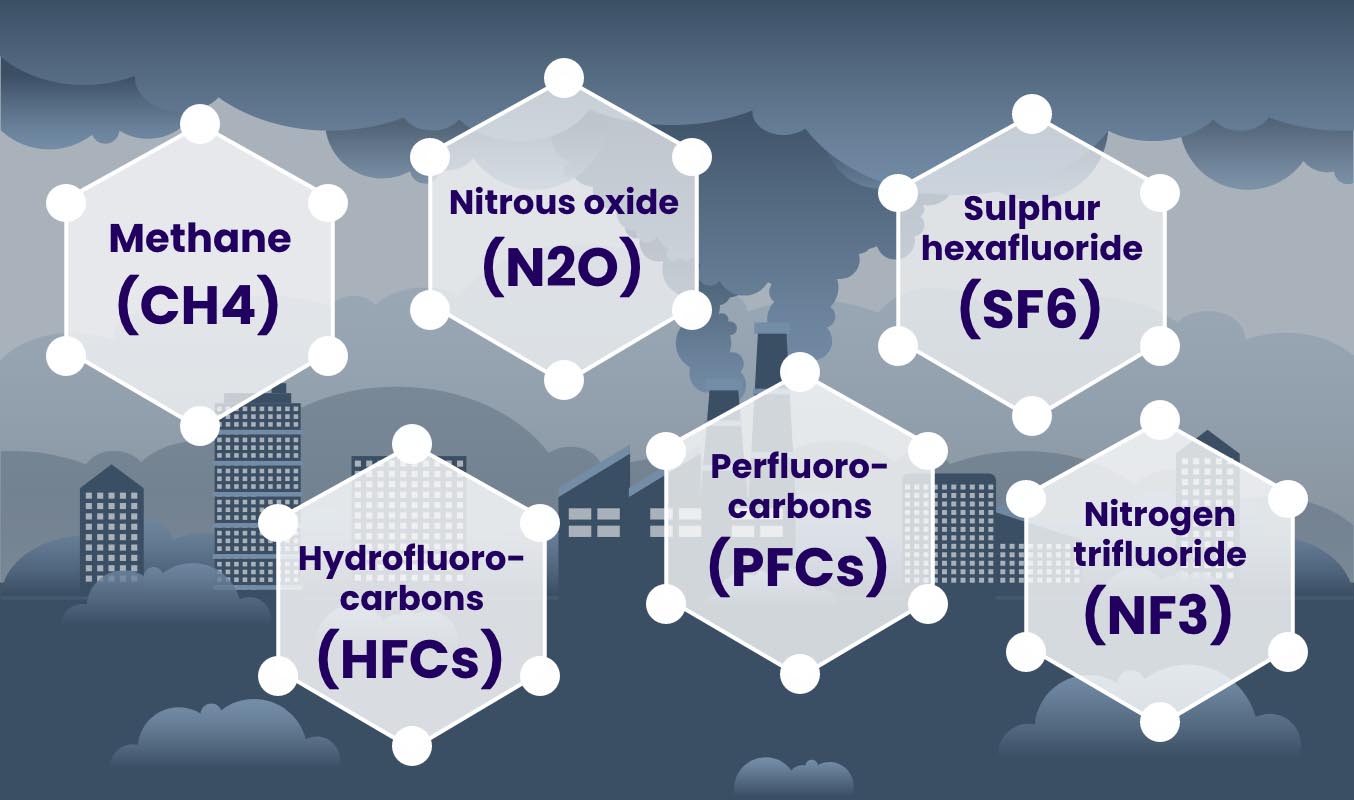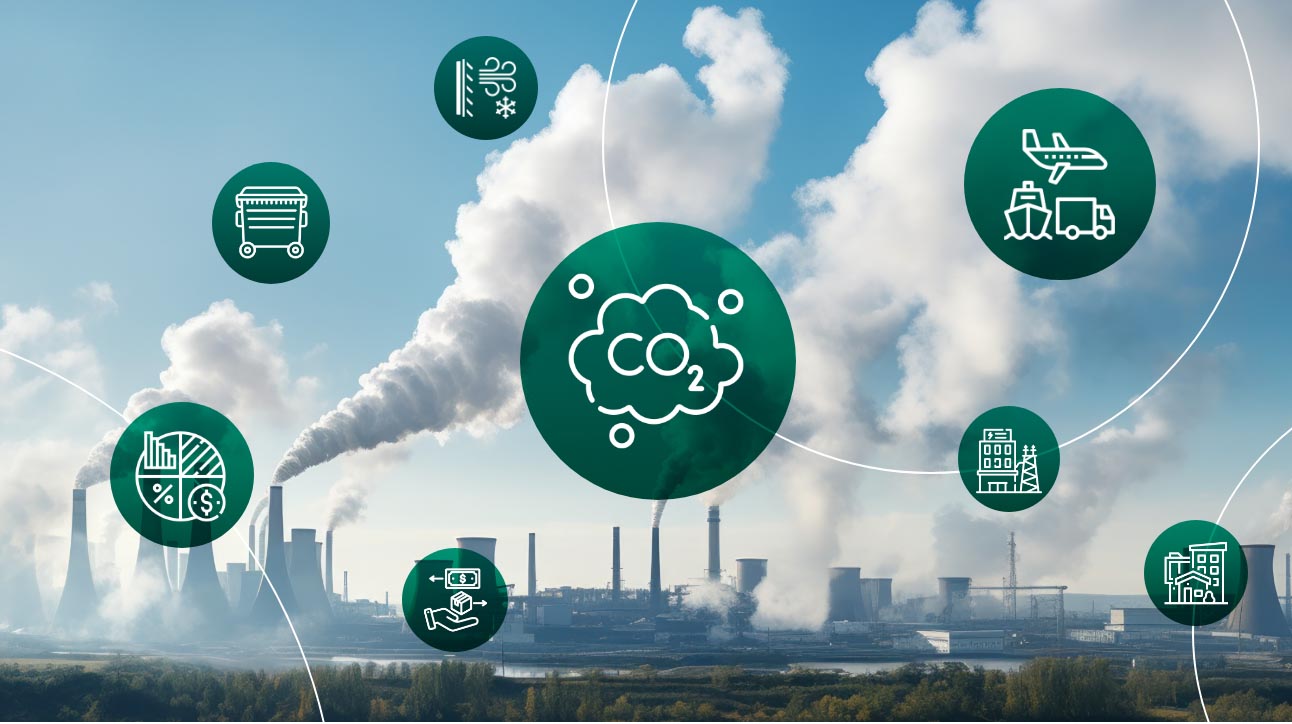For well over a century, petroleum-based fuels and natural gas have been the predominant source of energy around the world. Unfortunately, intensive fossil fuel consumption has resulted in billions of metric tonnes of carbon dioxide and other pollutants being released into the atmosphere every year.
Oil and gas dominate the market and rank among some of the highest emission contributors. As such, investors need to keep an eye on renewable technologies and methods for reducing carbon emissions in these industries.
Today, the dangers of carbon are becoming better understood as the world prepares to shift to a low-carbon economy. The essential first step in contributing to this change is learning how to reduce carbon footprints in every sector.
Carbon Management in the Energy Sector
Oil and gas producers are among the largest emitters of carbon dioxide in the world, accounting for 9% of global emissions of carbon and other greenhouse gases (GHGs). This poses a significant challenge to institutions that depend on investments in the energy sector to generate a substantial part of their profits: How can companies reduce their carbon footprints while retaining valuable investments in major energy producers?
Fortunately, a growing number of oil and gas producers are adopting emissions reduction and management strategies to increase their sustainability. These include:
- The elimination of methane leaks, venting and flaring
- Fuel-switching and improved efficiency in operations
- Making use of lower-carbon feedstocks resulting in low-carbon products
- Granular measurements of emissions achieved through build capacities
These approaches apply directly to the oil and gas industries’ carbon footprints. It does not speak to the emissions created by the fuel consumers burn.
Effective Ways to Reduce Your Company’s Carbon Footprint
UNEP’s six-sector solution states that to ensure the spike in global temperature is limited to 1.50C above pre-industrial levels, 30 Gigatonnes (Gt) of greenhouse gas emissions must be cut annually by 2030. Of this amount, the energy sector needs to contribute 8.2 Gt. This can be done in the following ways:
- Make a commitment to high-yielding Nationally Determined Contributions and energy transition initiatives
- Set carbon targets for national and sub-national decarbonization and net-zero goals
- Eliminate policies that support the fossil fuel industry
- Promote energy efficiency through incentivised renewable energy policies
A significant way to reduce a carbon footprint is to adopt changes to both infrastructure and business practices. Here are a few essential developments to pursue.
Establish a GHG Emission Reduction Strategy
Carbon is the most damaging and common greenhouse gas driving climate change, but it isn’t the only one. The Kyoto Protocol lists six other major GHGs besides carbon dioxide (CO2):

- Methane (CH4)
- Hydrofluorocarbons (HFCs)
- Nitrous oxide (N2O)
- Perfluorocarbons (PFCs)
- Sulphur hexafluoride (SF6)
- And nitrogen trifluoride (NF3)
Reducing your carbon footprint goes hand-in-hand with limiting emissions of these other GHGs, which requires a flexible GHG emission reduction strategy. Such efforts may include the adoption of climate-related targets like reducing emissions to a specific level by a chosen year or increased usage of low-carbon or sustainable energy sources. A tactic that has recently gained ground in several sectors is internal carbon pricing, which involves assigning a monetary value to carbon emissions attributable to a business.
Invest in Carbon Capture and Storage Usage
Carbon capture and storage (CCUS) refers to “the process of capturing carbon dioxide (CO2) emissions from fossil power generation and industrial processes for storage deep underground or re-use”. Captured and stored CO2 can be used in the production of biofuels, construction materials, and other innovative solutions.
Furthermore, CCUS technologies, alongside maintenance strategies emphasising secure, durable fittings, such as valves, seals, gauges, hoses, and more, can substantially reduce fugitive emissions.
Switch to Low-Carbon Feedstocks
Fossil fuels are often used by different industries as they contain high amounts of stored energy that can be converted to electricity. The implication here is that they release CO2 emissions as a byproduct of the combustion process. Using biomass to create biofuels can offer a substitute for high-carbon, petroleum-based fuels. Not only can these cut down on scope 1, or direct emissions, but it’s also a way to reduce your carbon footprint along your entire supply chain.
Expand Renewable Energy Infrastructure
Another effective way to limit carbon emissions in oil and gas infrastructure is to integrate renewable energy systems wherever possible. Solar, wind, and hydroelectric power can provide the energy needed to operate vital on-site equipment. This includes control systems and electronically actuated gauges and instruments.
Solar power systems can be an effective option when paired with an inverter to store valuable energy. Similarly, offices and other facilities can be heated and cooled using geothermal power to limit emissions.
Convene 2zero: A Critical Asset for Achieving Sustainability in the Energy Sector

As companies in the energy sector across the world research ways to reduce their carbon footprints, they can look to Convene 2zero to provide the vital data they require. A carbon calculator designed to track emissions across all scopes, Convene 2zero, powered by Convene ESG, provides precise insights into how much your company is emitting. This information can be used to identify promising strategies to cut down on your carbon footprint.
Want to learn more? Then visit Convene 2zero to read about its many useful features and tips on how to reduce your carbon footprint.














